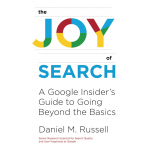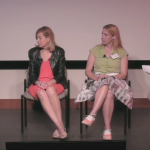I got curious…
… so I did a little follow-up research.
Although I had a PDF of The Book of St. Albans, I somehow could not find the terms of venery in the file. And that bothered me.
As Isaac Asimov said, “the most important word in science isn’t Eureka, but that’s funny…” (QuoteInvestigator)
And it was funny that I couldn’t actually find the collective nouns in the text.
So I did a little more searching…
After a bit (continuing on after I’d already written the previous blogpost), I learned that they’re in the “Hunting” section of the book.
Recall that the St. Albans book comes in multiple parts: there are treatises on hawking, hunting, and cote armour (heraldry and coats of arms). It was printed at Saint Albans by the schoolmaster-printer in 1486, and you can download a scan of a facsimile of the book at Google Books. That is, the Google Books document is a scan of a copy (a facsimile) of a book that was printed with some commentary to explain why this book is so important.
Alas, that scan is difficult to read and the Google Books version doesn’t help out by not providing page numbers. (So I couldn’t tell what pages I’d read or not!)
But by searching for [ Boke of Saint Albans ] in the Hathi Trust and in the Internet Archive, I managed to find a couple more high-quality scans of facsimiles.
In particular, the Hathi Trust version of “The boke of Saint Albans by Dame Juliana Berners, containing treatises on hawking, hunting, and cote armour: printed at Saint Albans by the schoolmaster-printer in 1486; reproduced in facsimile, with an introduction by William Blades” was a bit easier to read, and after a while, I found the section I was looking for–the list of venery terms. Or, as it appears in the book, “The Compaynys of beestys and fowlys.” Note that the pages don’t have numbers… the book predates the common use of page numbers! HOWEVER… In the Hathi Trust version, these are pages 121, 122, 123. (That’s the little numbers you see in the upper right corner of each scan.) {Note: You can also find these pages on the Internet Archive’s scan, beginning with page 114}
This text is a bit difficult to read (it IS from the very end of the era of Middle English), so the spellings and characters used are very different that what you’d expect in a current English text.
 |
| A page from “A Compilation of Collective Nouns” by M. L. Hooks |
And now we know.
Keep searching!








